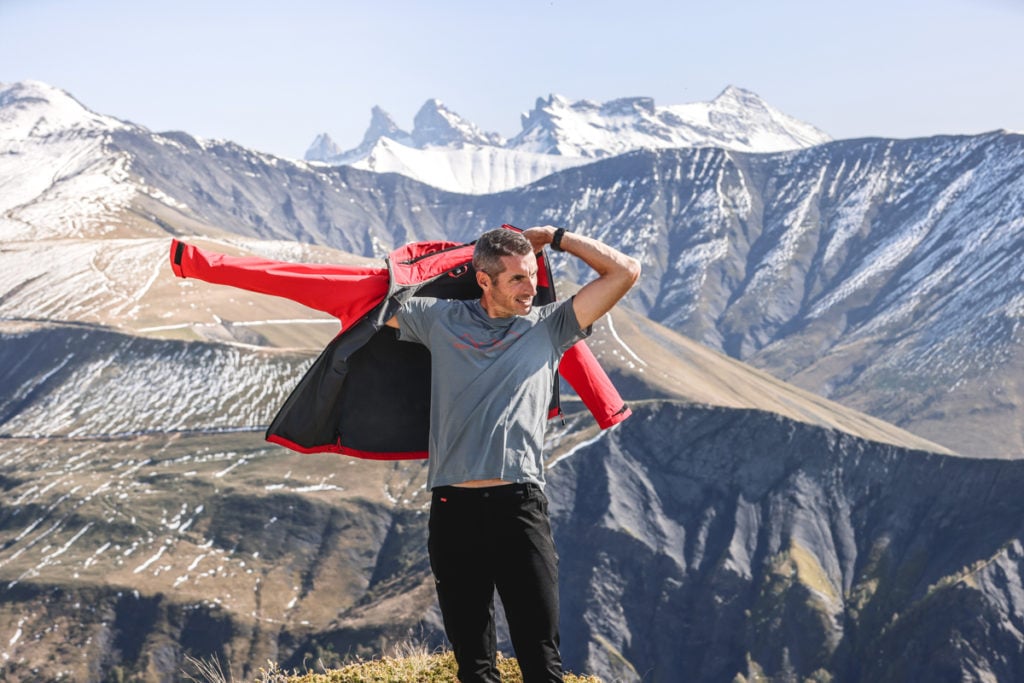Softshell technology for hiking
There are many factors to consider when choosing your hiking clothing: climate, environment, protection, duration and type of hiking... To cope with certain conditions, clothing is being improved with new technologies. They are more resistant and guarantee a certain comfort in the face of the natural elements. In this article we explain everything you need to know about softshell technology for hiking.

How softshell technology for hiking works
Softshell technology is not a fabric or material, but a clothing concept. Its name comes from the English language and can be translated as "soft shell". The aim of these garments is to provide warmth, breathability and insulation.
The softshell is designed in three layers:
An outer layer: a technical fabric that is resistant, elastic and water-repellent
A central membrane: both windproof and waterproof
An inner layer: a fleece fabric that guarantees thermal insulation
The design of softshell garments allows them to be used as both a second and third layer by hikers. Each garment is different and can have different properties. There are softshells that are more water-repellent, others that are more insulating, models with long or short sleeves, with or without a hood...
It is important to choose your softshell carefully and not to neglect certain details depending on the type of hiking and your needs.
What are the advantages
Softshell garments are very popular today due to their versatility and numerous benefits. They offer excellent thermal regulation and insulation, which is important when hiking. Windproofing is also guaranteed, especially for garments with Gore-Tex Windstopper® technology. These three elements allow you to engage in intense physical activity without suffering from cold or heat, as insulation and breathability are balanced.
The stretch and flexibility of garments with softshell technology is also appreciated. They usually have a four-way stretch, which allows them to stretch both up and down and side to side. This property allows you to have more freedom of movement than with hardshells.
Finally, softshells are water-repellent. They are water resistant in light precipitation. This means that you can take them on many hikes when the weather is fairly good. You can use them almost all year round: in winter, spring and autumn.
What are the disadvantages
While softshells have many advantages, they also have some drawbacks. The main one is that they are not completely waterproof and do not always have a hood. Unlike a hardshell jacket, the seams are not heat-sealed, so waterproofing is limited in the event of prolonged exposure to rain. If you're going hiking in the mountains where the weather is often unstable, it's best not to rely on a softshell or to bring rain gear as well.
It is also not advisable to take them to places where the wind is very strong if they are not equipped with a windproof membrane. Although they have windproof properties, they are not as resistant as waterproof and windproof hardshells, which can withstand strong gusts.
Finally, they are heavy and bulky, as they act as both a second and third layer. Classic windproof jackets usually weigh between 150 and 300 grams, while softshells are usually around 600 or 700 grams. While they are not uncomfortable when worn, they quickly become bulky in a rucksack. We do not recommend taking them with you on a multi-day trek.
When to use softshell technology
If you want to buy softshells, make sure they are suitable for the type of hiking you do. They are ideal for hiking in the following situations:
Cold and windy weather: they are totally suitable for this situation. Their insulation and breathability allow you to move in very good conditions.
In light rain: you don't have to stop to put on or take off your rain jacket. Your softshell can easily withstand a light rain.
All day: both versatile and comfortable, your softshell is perfectly suited to a day hike.
Intense activity: With its stretch and flexibility, intense effort is more enjoyable with a softshell.
Softshells are very comfortable to wear and extremely versatile. As you will have realised, these garments reach their limits when the weather is not favourable or when the duration of your hike is several days. However, they are the perfect companions for day hikes in pleasant to moderate conditions.
